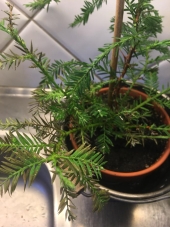posted 7 years ago
I'm new to Permies, and have spent copious time reading about garden beds as I would love to fit some into the 3/4 acre yard my husband and I purchased about a year ago in the Pacific Northwest. We have five 100+ ft sequoia redwoods on our land that limit usability. For gardening, the easiest thing would be to take them out, but they are lovely year round, and on a property with a very high water table they help control minor localized flooding throughout our wet fall/winter/spring season(s).
That being said I'm trying to decide on the best garden beds considering these parameters:
1) The redwoods stay - with the exception of one that looks pretty unhealthy compared to the rest
2) I don't know how much digging I can get away with without seriously disturbing the redwood root systems. (I should also mention we have recently had 6 western red cedar get infested with beetles and are dying and being removed. I am not sure if the trees were dying and the beetles came in after, or if they beetles caused the dying. Regardless I am somewhat concerned about the health of the sequoias and would like to limit root disturbance if it might compromise them.)
3) I would love to try some hugelkultur but am not sure about the digging part due to the trees.
4) I have read that raised beds are not water efficient, but would that matter if we can easily dig wells just about anywhere in our yard? (Our water table is about 18" during the wet season, but I haven't measured it during our short summers.)
5) We have a lot of voles in our area that have decimated garden areas at our previous residence, so some kind of mesh or cloth to keep them out is a must.
6) My experience gardening near very large, water loving trees is they will root into any great soil and take it over - what is the best method of keeping my garden for food and not redwoods?
I'm leaning towards raised beds, but I also don't know how deep to make them if I decide not to dig at all. And can I still do hugelkultur if I don't do any digging? Or would that require my beds be way too tall?
Any experience with difficult gardening areas would be greatly appreciated!












